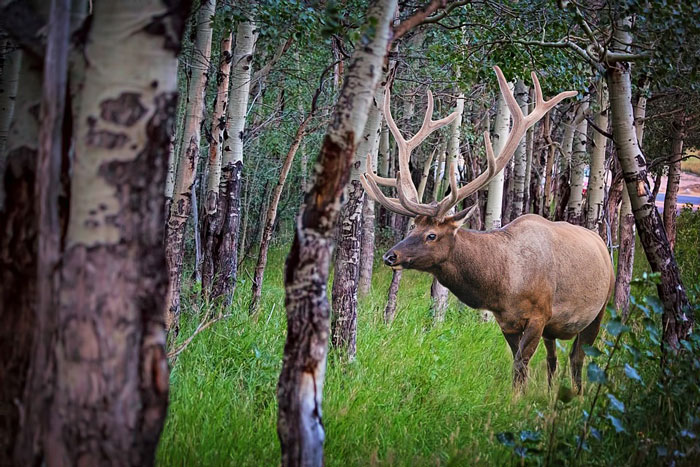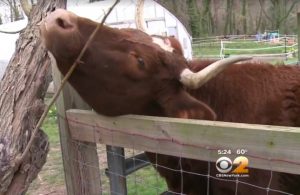BILLINGS (RELEASE) – The number of hunters who stopped at Fish, Wildlife and Parks check stations in south-central Montana during the first two weekends of the 2017 general big-game season was down from last year. The deer harvest also was lower than in 2016, but the number of checked elk was up sharply from a year ago.
FWP operated four check stations that also were open last year – at Columbus, Laurel, Big Timber and Lavina. At those stations, 1,705 hunters checked 109 white-tailed deer – down from 113 last year – and 225 mule deer – down from 228 in 2016. The also checked 120 elk, up from 76 a year ago.
Billings
FWP also opened a new check station in Billings Heights, for which there are no comparisons to previous years. At the Billings check station, FWP wildlife biologist Megan O’Reilly checked 357 hunters during the first two weekends of the 2017 general big-game season. Those hunters had harvested three white-tailed deer, 72 mule deer and 27 elk along with 13 antelope and a bighorn sheep. Of those who stopped, 32 percent had harvested an animal.
Columbus
The number of hunters who stopped at the Columbus check station during the first two weekends of the 2017 season was down from the same weekends a year ago, but the percentage of hunters who harvested game was up sharply.
A total of 340 hunters stopped at Columbus during the opening and second weekends of the season, down from 388 a year ago. But 35.5 percent had game in their vehicles compared to 24 percent during the same two weekends in 2016.
During the four days that he operated the check station, FWP wildlife biologist Shawn Stewart checked 61 mule deer – up from 43 a year ago – and 40 white-tailed deer – up from 35 in 2016. He also checked 18 elk, up eight from the same four days a year ago.
Lavina
At FWP’s Lavina check station, fewer hunters than last year stopped during the first two weekends of the general big-game season. They checked fewer deer, but more elk than in 2016 and a slightly higher percentage of hunters had harvested animals.
FWP wildlife biologist Ashley Taylor checked 642 hunters during the two weekends this year, down from 733 during the same weekends last year. Hunters brought in 13 white-tailed deer – down from 23 a year ago – and 42 mule deer, down from 36 in 2016. This year’s checked elk harvest was 50 animals, up eight from the same time in 2016. For the first two weekends, 18 percent of hunters who stopped at Lavina had harvested game, up less than half a percentage point from last year.
Laurel
At FWP’s Laurel check station, fewer hunters stopped this year during the first two weekends of the season and fewer of them had harvested deer than in 2016.
FWP wildlife research specialist Jay Watson checked 221 hunters at Laurel during the first two weekends of the season – down from 242 during the same time in 2016. Those hunters checked 24 white-tailed deer – down one from a year ago – and 32 mule deer – down from 47 in 2016. Of those who stopped, 26 percent had harvested game, down from 30 percent during the same two weekends last year.
Big Timber
At FWP’s Big Timber check station, the number of hunters this year as well as the deer and elk harvest all were up steeply from the first two weekends of the 2016 season.
FWP wildlife biologist Justin Paugh checked 502 hunters at Big Timber during the first two weekends of the season – up from 438 during the same time last year. Those hunters checked 32 white-tailed deer – up from 32 last year – and 90 mule deer—up from 79 in 2016. Hunters had 51 elk – more than double the 23 checked during the first two weekends of 2016.
Of those who stopped, 45 percent had harvested an animal, up from 38 percent during the same two weekends in 2016.
Hunters are reminded that they must stop at any check station they pass while hunting, whether or not they have harvested game. Check stations primarily are intended for biologists to gather statistical information about animals and hunters.
This fall, FWP also is gathering tissue samples to test for the presence of chronic wasting disease, or CWD. CWD is a progressive, fatal disease affecting the central nervous system of deer, elk and moose. It has not yet been discovered in Montana’s wild populations, but it has been detected in 21 other states and two Canadian provinces – some very near the border with Montana.
As the disease continues to expand, FWP officials believe it is only a matter of time before it is in Montana. Biologists believe that early detection provides Montana with best chance of containing CWD.




